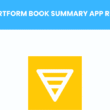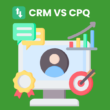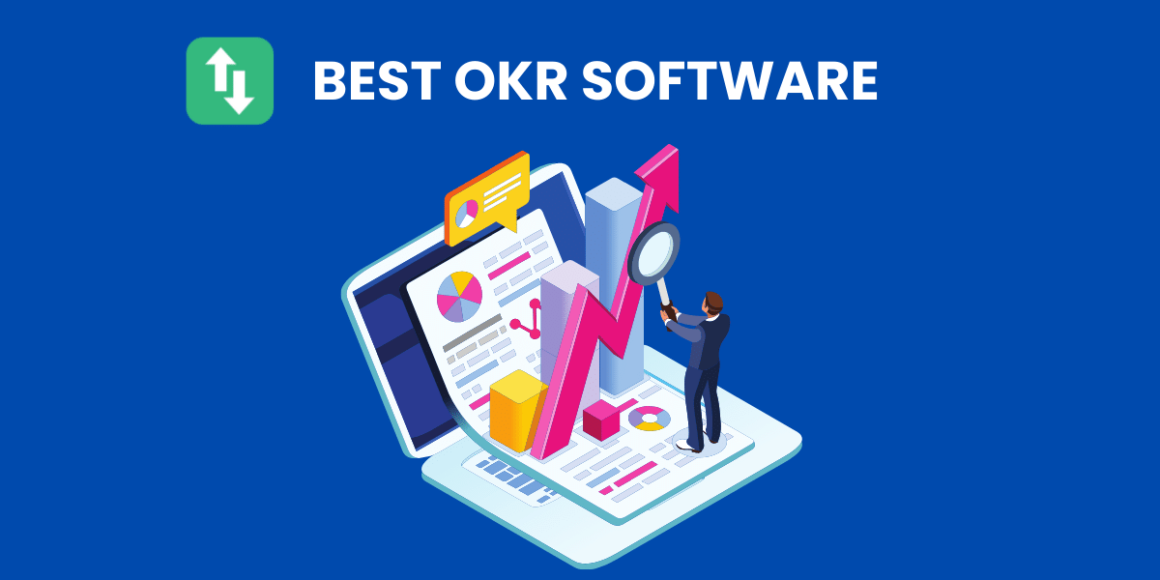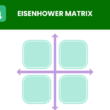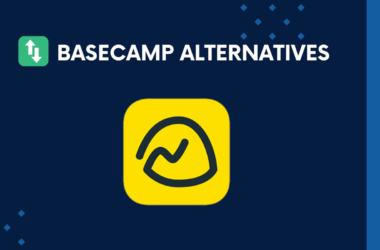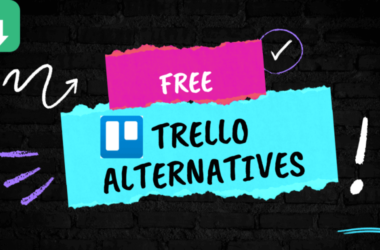Table of Contents Show
In the dynamic world of business management, the clarity of objectives and the precision of their outcomes are paramount.
This is where Objectives and Key Results (OKRs) come into play—a goal-setting framework that helps organizations define and track objectives and their outcomes.
With the right OKR software, businesses can not only set clear goals but also foster alignment, improve engagement, and enhance overall productivity.
This guide dives into the best OKR software of 2025, providing insights into how these tools can transform your strategic planning.
What are OKRs (Objectives and Key Results)?
OKRs, or Objectives and Key Results, are a strategic framework used by organizations to set measurable goals and track their outcomes over time.
The concept, which has gained significant popularity for its effectiveness in aligning and engaging teams, is simple yet powerful.
It revolves around setting ambitious, aspirational objectives and linking them to concrete, quantifiable results that act as benchmarks for success.
The Structure of OKRs
1. Objective:
This component is designed to be a clear, inspirational, and challenging goal. It is qualitative and describes what you aspire to achieve. Objectives should be short, engaging, and motivational to ensure they are memorable and impactful for the entire team.
2. Key Results:
Key results are measurable outcomes that will indicate success or progress toward the objective. They should be quantifiable, achievable, and lead directly to the objective being considered as ‘achieved’. Typically, each objective has about three key results to maintain focus and clarity.
The Philosophy Behind OKRs
OKRs are not just about goal-setting; they’re about setting goals that push the boundaries of what seems possible. The philosophy encourages teams to aim high, think big, and measure progress against the most meaningful outcomes.
This methodology fosters transparency across all levels of an organization, as everyone has visibility into what others are working on and how their efforts contribute towards shared goals.
Benefits of Implementing OKRs
- Alignment and Commitment: OKRs help ensure that everyone in the organization understands the big picture and their role in achieving it. This alignment is critical for team cohesion and organizational success.
- Focus and Prioritization: By defining key results, teams can focus on the tasks that truly matter, helping them stay on track and manage resources more efficiently.
- Tracking Progress: OKRs provide a clear benchmark for success, making it easier to track progress and make data-driven decisions. This continuous monitoring helps organizations adjust their strategies in real time.
- Encouraging Ambition: Since OKRs are meant to be challenging, they enable teams to stretch beyond their current capacities and innovate, driving growth and improvement.
- Enhancing Transparency: The clear and public nature of OKRs improves transparency within the organization. Everyone knows what others are working on, which increases accountability and fosters a culture of trust.
What to Look for in OKR Software?
Choosing the right OKR software involves several key considerations that can significantly impact its effectiveness within your organization:
1. Customizability
The best OKR tools adapt to your organization’s size, culture, and goals. Whether you’re a startup or a large corporation, the software should allow you to tailor features to meet your specific needs.
2. Integration Capabilities
OKR software should seamlessly integrate with other tools you use, such as project management platforms, communication apps, and analytics tools, to streamline workflows and data synthesis.
3. User Interface
A user-friendly interface is crucial. It should be intuitive enough for all employees to adopt with minimal training, ensuring wide usability across the organization.
4. Reporting and Analytics
Effective OKR software provides comprehensive reporting tools to track progress, visualize data, and adjust strategies in real-time. Look for software that offers detailed insights and customizable reports.
5. Support and Resources
Robust customer support and extensive resources such as tutorials, guides, and community forums are essential for troubleshooting and maximizing the software’s value.
6. Price
Understand the pricing models—often tiered by features, support levels, and the number of users—to ensure the cost aligns with your budget and the value it provides.
7. Mobile App Availability
The best OKR apps offer mobile versions to help managers and teams track and update their goals on the go, which is crucial for modern, flexible work environments.
8. Automation Features
Look for software that automates routine tasks like progress updates and reminders, which can save time and reduce errors.
9. Security
Data security is critical. Ensure the OKR software complies with global data protection regulations and offers robust security features to safeguard your data.
Comprehensive Review of Top OKR Software of 2025
Let’s explore some of the most highly regarded OKR software this year, highlighting their strengths and areas for improvement.
1. OKRs Tool
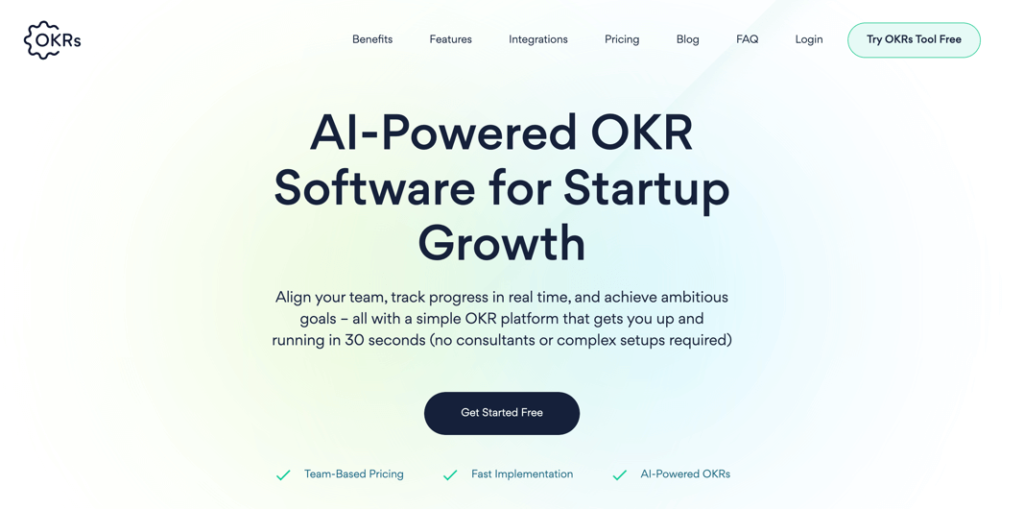
OKRs Tool is a startup-focused OKR software designed to simplify goal setting, alignment, and execution. With AI-powered features, it helps teams create, track, and refine their objectives effortlessly – without unnecessary complexity.
Built specifically for fast-growing startups, OKRs Tool ensures teams stay aligned on priorities, track progress in real-time, and make data-driven decisions to drive growth.
The platform eliminates the hassle of manual goal management, allowing founders and teams to focus on execution.
Key Features:
- AI-Powered OKR Creation – Instantly generate relevant objectives and key results tailored to your startup’s goals and team roles.
- Real-Time Progress Tracking – Keep OKRs up to date with automatic updates, check-ins, and team-wide visibility.
- AI-Driven Recommendations – Get smart insights on resource allocation, engagement levels, and execution strategies.
- Collaboration & Alignment – Ensure teams are working toward shared goals with role-based assignments and visibility.
- Dynamic Resource Allocation – AI analyzes OKR performance in real-time and suggests the best way to allocate people, budget, and time for maximum impact.
Pros:
- Startup-friendly pricing – Free for small teams, with scalable team-based plans
- AI-driven insights – Helps teams continuously improve and optimize OKRs.
- Easy to use – Simple and intuitive, even for teams new to OKRs.
Cons:
- Limited enterprise features – Focused on startups rather than large corporations.
- Still expanding integrations – Key integrations like Google Workspace and Jira are planned.
Pricing:
- Free Plan – Free forever plan for small teams.
- Growth Plan – Team-based pricing, starting from $30 per team per month.
- Scale Plan – For bigger teams, starting at $50 per team per month.
2. Weekdone
Weekdone is an OKR software designed to improve team communication and track weekly progress. It provides insights into team productivity and effectiveness, making it easier for leaders to manage goals and expectations.
This top OKR tool is a go-to platform for project managers, and decision makers to streamline their project operations. Users can organize their goals with OKRS, and help improve team collaboration.
You can get regular project insights on the progress of the project, and help team members to share their thoughts
Key Features:
- Weekly planning and check-ins
- Team progress reports
- Customizable OKR dashboards
- Goals tracking and setting
- Team pulse surveys
- Integrations with various communication tools
- Meeting agenda and team announcement
Pros:
- Intuitive user interface
- Strong focus on team alignment and communication
- Excellent customer support
Cons:
- Limited customization options for reports
- May not scale well for very large organizations
Pricing:
- Free for teams of up to 3 users
- Paid plans start at $90/month (billed yearly) for teams of 4 up to 10 users
3. PeopleGoal
PeopleGoal is an OKR and performance management tool that facilitates goal setting, performance appraisals, and employee development. It’s particularly well-suited for HR processes.
It is a tailor-made tool that smart teams can use to track OKRs and goals with pre-built templates. Using this tool, you can connect company, individual, and team goals for better transparency.
Key Features:
- Configurable workflow engine
- Employee performance reviews
- 360-degree feedback
- Goal alignment
- Survey tool
- HR onboarding
- Social recognition features
Pros:
- Highly customizable to fit HR needs
- Comprehensive employee engagement features
- Easy integration with HR systems
Cons:
- The learning curve can be steep due to customization capabilities
- Some users report slow response times from support
Pricing:
- Custom pricing based on the number of users and selected features
- Professional plan starting at $4/user per month
4. ClickUp
ClickUp is a versatile project management tool that includes robust OKR tracking functionalities. It’s designed to replace multiple productivity apps with a single platform.
It is an all-in-one management tool to help teams to bring everything to one place related to projects, and tasks they are working on. You can easily set goals, and view them visually using Gantt charts and project boards.
Key Features:
- Task and project management
- Custom views like Lists, Boards, and Gantt charts
- Goal setting and tracking
- Automation and reminders
Pros:
- Highly versatile and feature-rich
- Excellent for integrating OKRs with project management
- Offers a free version with extensive features
Cons:
- Can be overwhelming due to its extensive features
- Performance issues with larger data sets
Pricing:
- Free plan available
- Paid plans start at $5 per user per month
5. Lattice
Lattice is a performance management software that focuses on building a culture around goal setting and performance with tools for OKRs, feedback, and employee growth.
Easily align your team with what matters the most for your company. Get the ability to set strategic objectives using Lattice, and keep track of goal status.
Key Features:
- Real-time feedback and reviews
- 1-on-1 meeting agendas
- Customizable OKR tracking
- Employee growth plans
- Integration with Salesforce, Jira, Slack, and Microsoft Teams
Pros:
- Strong emphasis on feedback and development
- Integrates performance management with OKRs
- User-friendly interface
Cons:
- Pricier than some competitors
- Some features may be excessive for smaller teams
Pricing:
- Pricing starts at $9 per user per month
6. Quantive
Quantive is an OKR software that emphasizes data-driven goal management and offers analytical tools to measure and drive performance.
This tool helps companies to track team performance and lets all teams track company-wide goals. You can create multiple-level OKRs for different departments, and teams. Moreover, it can integrate with team management tools.
Key Features:
- Advanced data analytics
- Visual OKR progress tracking
- Integration with existing enterprise tools
- Collaborative goal setting
Pros:
- Strong analytical capabilities
- Scalable for large enterprises
- Comprehensive training and support
Cons:
- May be complex for smaller teams or simpler needs
- Higher cost barrier for full features
Pricing:
- Custom pricing depending on enterprise size and requirements
7. 15Five
15Five combines continuous employee feedback with OKR and KPI tracking to facilitate management and employee engagement.
Key Features:
- Weekly check-in reports
- High Five recognition tool
- 1-on-1 coaching tools
- Integration with third-party apps
Pros:
- Focuses on improving manager-employee communication
- User-friendly and engaging for employees
- Effective for remote teams
Cons:
- Limited OKR features compared to dedicated OKR tools
- Some features dependent on higher-tier plans
Pricing:
- Starts at $7 per user per month
8. Leapsome
Leapsome offers a comprehensive platform for performance management and employee engagement, integrating OKRs with continuous feedback, learning, and employee surveys to create a holistic development environment.
Key Features:
- Customizable performance reviews
- Real-time feedback and praise
- Learning and development modules
- Comprehensive OKR and goal management
Pros:
- Integrates various aspects of HR into a single platform
- Highly customizable to align with organizational culture
- Strong focus on employee development
Cons:
- May require significant setup time to fully customize
- Pricing can be high for smaller companies
Pricing:
- Pricing is custom based on the features and number of users. Interested parties need to contact Leapsome for a quote.
9. Asana
Asana is a well-known project management tool incorporating goal-tracking features, allowing teams to align their daily tasks with strategic objectives.
This tool streamlines workflows to connect teams working on projects and bring them together to achieve organizational goals.
Users can benefit from this tool to manage their projects on the go and manage tasks visually. You get the ability to set OKR and goals to share it across the organization.
Key Features:
- Task and project tracking
- Milestone and deadline management
- Portfolio management
- Workload management
- Project views and custom fields
- Integration with various communication and collaboration tools
Pros:
- Familiar interface for those already using it for project management
- Good for integrating daily tasks with strategic goals
- A broad range of integrations with other tools
Cons:
- OKR features are somewhat basic compared to specialized tools
- Can become expensive as teams grow and need more features
Pricing:
- Basic version is free
- Premium plans start at $10.99 per user per month (billed annually)
- Advanced plan at $24.99/user per month
- Enterprise and Enterprise Plus plan is also available
Find more tools like Asana here:
Top 10 Alternatives to Asana for Project Management
10. PerformYard
PerformYard is designed for HR leaders looking for a flexible performance management solution, offering features that support goal-setting, performance reviews, and feedback.
Key Features:
- Flexible performance reviews
- Continuous feedback system
- Goal management with OKRs
- Customizable workflows
Pros:
- Highly customizable to fit various performance management styles
- Streamlines the performance review process
- Strong support and user onboarding
Cons:
- May be over-featured for teams only needing OKR functionality
- Setup and customization require time and effort
Pricing:
- PerformYard offers custom pricing based on the size of the organization and the specific features required.
11. Oboard
Oboard is specifically tailored for integration with Jira, making it an ideal choice for software development teams using Atlassian products to manage their OKRs directly within their project management ecosystem.
Key Features:
- Seamless integration with Jira
- Visual progress tracking
- Supports agile methodology
- Customizable dashboards and reports
Pros:
- Perfect for teams already embedded in the Atlassian environment
- Supports agile and scrum frameworks
- Enhances visibility across technical projects
Cons:
- Limited to teams using Jira
- Less suitable for non-technical teams
Pricing:
- Starts at $10 per month for small teams
- Larger teams and enterprises need to contact Oboard for custom pricing
12. Profit.co
Profit.co is an all-in-one OKR software that is highly customizable and focuses on strategy execution, enabling businesses to align their corporate strategy with execution using OKRs.
Key Features:
- Full OKR cycle management
- Task management integration
- Extensive dashboard and analytics
- Employee engagement tools
Pros:
- Extremely detailed and customizable OKR features
- Strong focus on aligning strategy with execution
- Comprehensive analytics and reporting capabilities
Cons:
- Can be complex to implement and maintain
- Might be overwhelming for smaller teams or simpler needs
Pricing:
- Starts at $7 per user per month with a minimum of five users
13. Hirebook
Hirebook is designed to empower teams through check-ins, key results tracking, and effective meetings, all centered around OKRs to improve team performance and engagement.
Key Features:
- Employee check-ins and meetings
- OKR tracking
- Decision logs and action items
- Integration with popular communication tools
Pros:
- Enhances manager-employee communication
- Simple and intuitive interface
- Good for maintaining engagement and accountability
Cons:
- Limited advanced features compared to other tools
- Best suited for small to medium-sized teams
Pricing:
- Starts at $5 per user per month
Implementing OKRs in Your Organization
To successfully implement OKRs, it is essential to start with a clear understanding of your organization’s strategic priorities. From there, leaders can set objectives at the company level and invite teams and individuals to contribute their OKRs that align with these broader goals. Regular check-ins, preferably quarterly, help ensure that the OKRs are still relevant and adjustments can be made as necessary.
OKRs are not a one-size-fits-all solution, and they require customization to fit the specific needs and culture of each organization. However, when implemented effectively, they can transform how a company sets and achieves goals, leading to greater productivity, alignment, and success.
Conclusion
The best OKR software of 2025 offers powerful features that can transform how your organization sets, tracks, and achieves goals.
By choosing a tool that aligns with your specific needs, you can enhance clarity, alignment, and productivity—critical components for business success in today’s competitive environment.
Have we missed any OKR software? Write to us at hi@productivityshift.com
More Readings:


